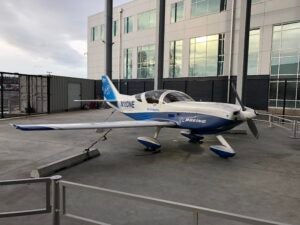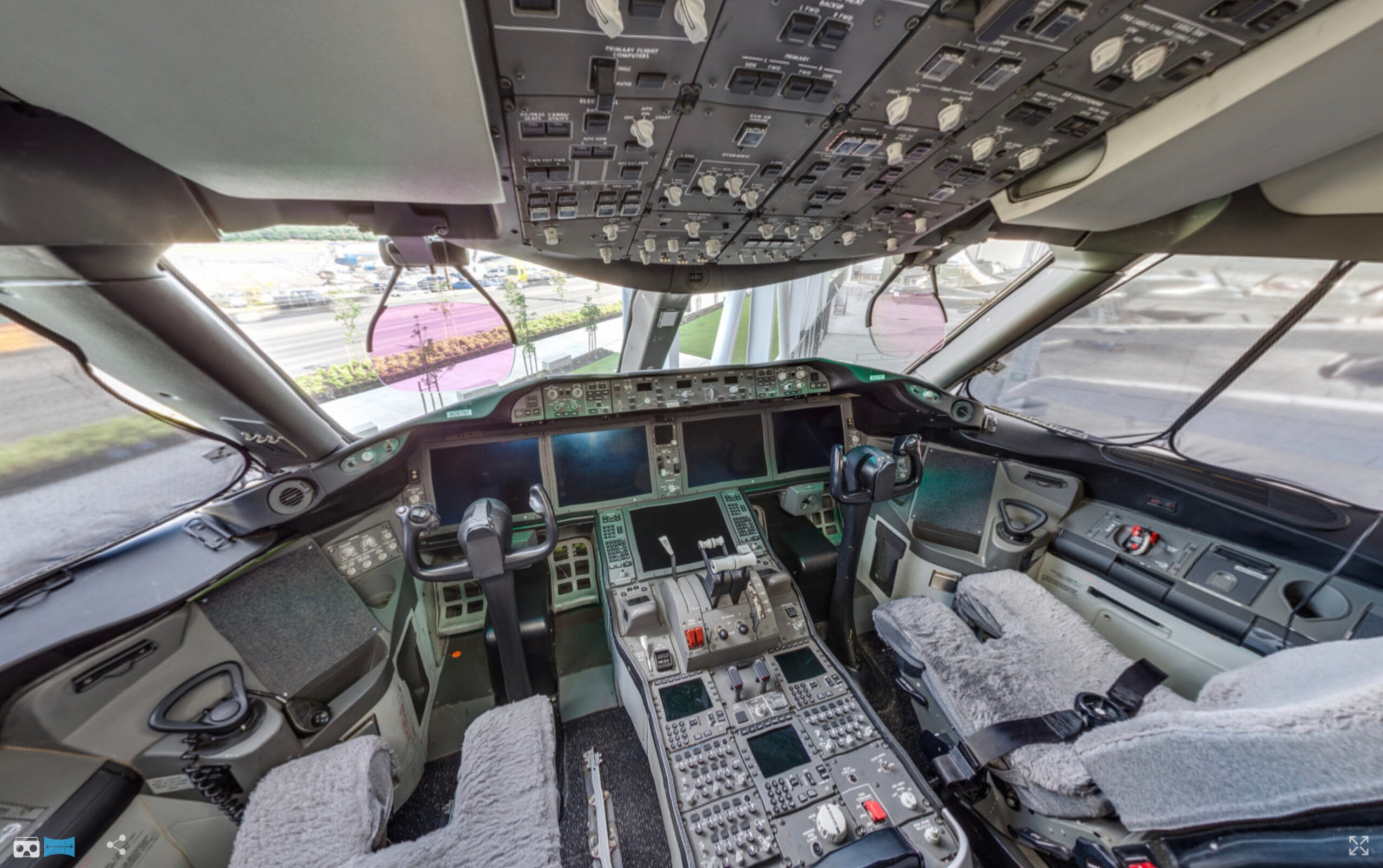
The Museum of Flight in Seattle, Washington, is now offering virtual walkthroughs of some of the aircraft in their collection, including the Boeing B-29, Concorde and Douglas DC-2. Although the museum’s virtual offerings don’t (yet) include kit aircraft, any aviation enthusiast will enjoy touring these iconic airplanes.
The reason for the “yet” comment above? The Museum of Flight houses a Glasair Super II FT, which was built by a handful of Boeing employees in 1989. I wonder why they didn’t create a virtual tour of this lovely little homebuilt. Maybe now they will.

The museum conducted 3D interior scans using a Matterport 3D Camera, which was originally used to scan the inside of houses for real-estate marketing. Turns out it works great for capturing panorama images of cockpits, galleys, cabins and lavatories, all of which can be seen on a self-guided tour in the comfort of your own home. Some aircraft also have 360° panorama images available.
Here’s what awaits you:
Antonov An-2: Step into the cockpit of this STOL aircraft and peer out the transparent roof and dome shaped windows. You’ll notice something resembling a cupholder to the left of the copilot’s seat. Was this part of the TC? Or installed on an STC?
Boeing 247D: This transport aircraft was one of the first to incorporate technical advancements such as trim tabs and autopilot. The cabin was insulated to regulate temperature and suppress noise to increase passenger comfort. Do you think the curtains above the escape hatch also increased passenger comfort?
Boeing B-17F: Crawl below the cockpit to see the navigator’s and bombardier’s station. The B-17 Flying Fortress virtual tour provides views of areas that would be difficult to get to in person.
Boeing B-29: Here we have one of the largest and most capable aircraft of WW-II. Be sure to check out the gunner’s seat in the B-29 Superfortress.
Boeing VC-137B “Air Force One”: This particular aircraft carried President Eisenhower, Kennedy, Johnson and Nixon. Imagine if these wood-paneled walls could talk.
There are also some newer jetliners. Perhaps some of you have flown these aircraft to support your homebuilt addiction:
Boeing 727-100, Boeing 737-130 and Boeing 747-121.
Boeing 787 Dreamliner: Those of you at the wiring stage of your airplane build will feel for the people who put this airplane together.
Concorde: Pour yourself a bubbly drink and imagine what it must have been like to travel on this supersonic transport.
Douglas DC-2: Here’s one for all you metal heads out there. One of the first all-metal airliners, the DC-2 was a pioneer of its time.
NASA Space Shuttle Trainer: This Full Fuselage Trainer helped astronauts familiarize themselves with the general layout, basic housekeeping, emergency procedures and in-flight maintenance.
The only disadvantage to this type of tour is that if you get carried away, like I did, you might feel a little nauseous. Maybe this allows for a more realistic experience, as if you’ve actually flown Mach 2 on a Concorde. Unfortunately, you’re on your own for sick sacks.






Although these are not on the 3D cockpit/inside tour, you can look up the following on the MoF website to get your Homebuilt “fix”:
The original (1962) Pete Bowers Fly Baby 1A – hanging inside the Great Gallery
You’ll also find a “new” Heath Parasol – built from original plans by Museum Restoration Center volunteers
A unique “Homebuilt” in the corner of the Great Gallery is the Stinson Model O that was reverse engineered by Jeff Paulson of Overall Aircraft Services & Restoration from a couple of pictures and parts of cabin model Stinson – 29 months of effort – and flown 235 hours, then donated after winning awards to include a Lindy award at Oshkosh for Replica Champion.
You will also find a Kasper Wing up at the Restoration Center in Everett which was allowed to be flown in the Kingdome back when it still existed!
A Boeing B&W (replica) that was hand built by Boeing and Museum volunteers (flyable) representing the first airplane designed and built by Boeing. Hanging over the Great Gallery entrance.
Curtis JN-4D Jenny (reproduction) rebuilt by hand
Granville Brothers Gee Bee Z “City of Springfield (reproduction – flyable)
Learfan 2100 – flying prototype, hand laid up composite (I met a guy who told the story of the composite layup process that he did interning while going to college).
The McAllister Yakima Clipper glider – hand made original by Charlie himself in 1931/32
Rutan Model 27 Vari Viggen is at the Restoration Center.
Sorrell Cool Crow 1 is also in Everett
Stephens Akro, built by Gary Zimmerman in 1971, it became the first amateur-built In 1976, Joann Osterud bought this aircraft and used it in hundreds of her air show performances.
Molt Taylor Aerocar III in the Great Gallery.
Wright 1902 glider (reproduction) – flyable, many flights
Wright 1903 flyer (reproduction) – flyable, built as one of 3 for the 100th Anniversary Commemorative flight. Never flew.
So, even without 3D cockpit tours, you can still look up these amazing aircraft and find Homebuilt history at the Museum of Flight. And I may have missed a few…
Thanks Chris for the details! I might add that the original Fly Baby is at the Restoration Center, the one in the Great Gallery is a later homebuilt and we hope to switch them out someday.
Although the Jenny was almost completely made from scratch, it began with a real airplane. Most of the wood was not suitable for restoration so those parts served as templates for the replacements. Virtually all of the metal pieces from the original plane are in the restoration, as well as some of the wood and spars. It has a data plate, so as you know, that makes it a restoration and not a replica.
I’ll have to look into the history of our Wright glider, I have not been informed that it actually flew.
Thanks! Ted, PR Guy at The Museum of Flight